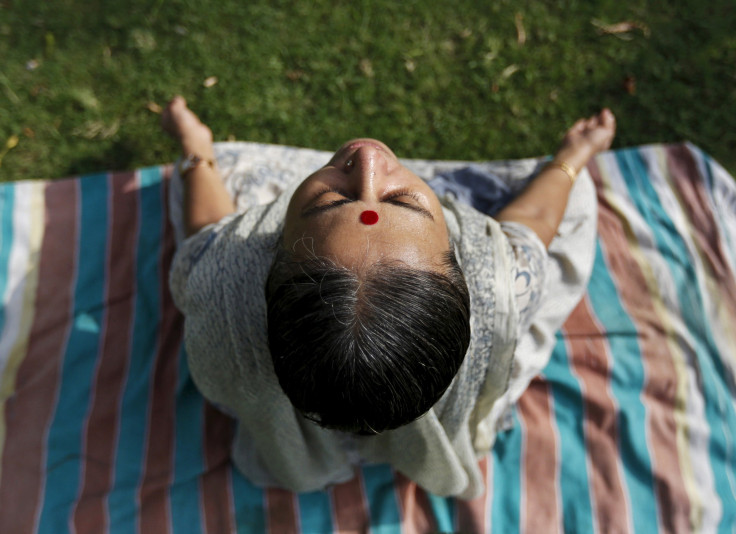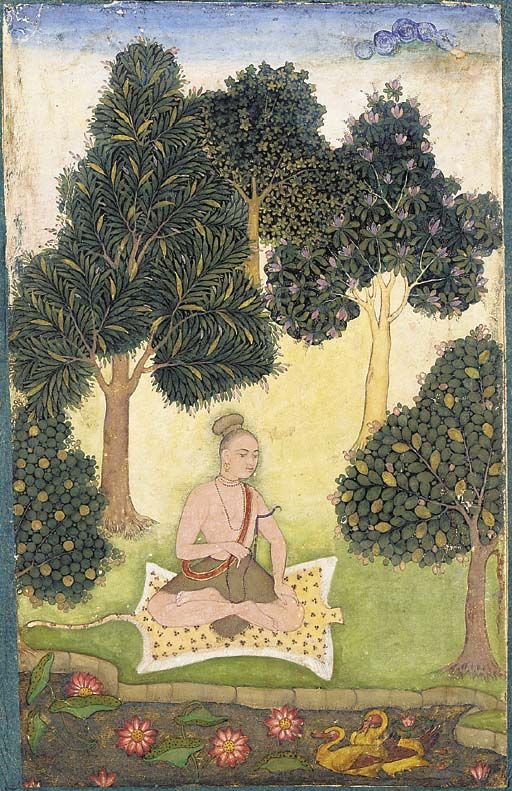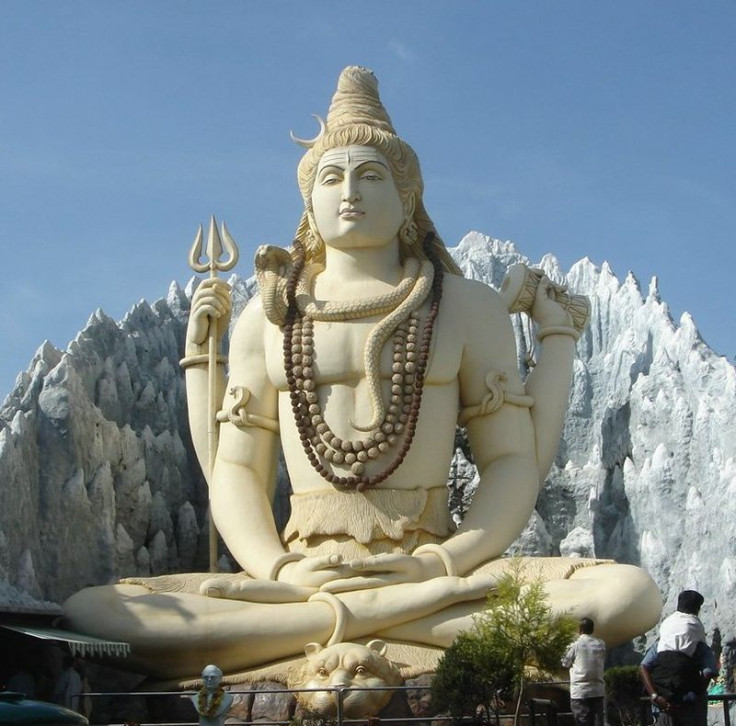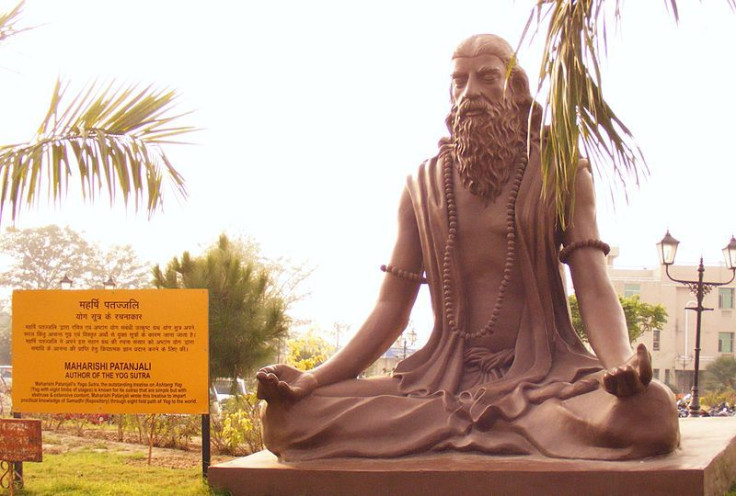A Brief History Of Yoga: From Ancient Hindu Scriptures To The Modern, Westernized Practice

Yoga: the trendy practice that your hippie, hipster, or fitness friends rave about. Garbed in yoga pants and carrying colorful mats bought off Amazon, the modern-day “yogi” attends one-hour classes that focus on physical stretching, movement, and detoxing from their busy modern lives. We hear a lot about the benefits of yoga, from its ability to decrease stress, chronic pain, as well as the risk for chronic diseases like obesity, diabetes, and heart disease.
What we don’t hear about as often, however, is the history of yoga. Most people are aware of its Indian spiritual and religious roots, but those tend to get washed out by the manufactured, commodified versions of yoga we see today. Perhaps that’s because research on yoga’s origins is hard to find, and its history is a complicated, lengthy narrative. In fact, yoga is incredibly complex — even the word "yoga" has taken on hundreds of different meanings and practices throughout the years. What you and I might assume is “yoga” is probably not even closely related to what yoga was thousands of years ago.
“Nearly all of our popular assumptions about yoga theory date from the past 150 years, and very few modern-day practices date from before the 12th century,” David Gordon White, a professor of religious studies at the University of California, Santa Barbara, writes in his paper, Yoga, Brief History of an Idea. “This is not the first time that people have ‘reinvented’ yoga in their own image.”
We can try to delineate the history of yoga — at least a brief one. But a practice so rich in religious, spiritual, and physical meaning would take years or even a lifetime to fully understand, grasp, and manifest.
ANCIENT
3300-1500 BCE. Historians aren’t entirely sure when the notion or practice of yoga first appeared, and it’s often left to debate. The term “yoga,” however, is found in ancient India’s earliest known scripts — the Vedas. They date from the Vedic period, which began in 1500 BCE. Composed in Vedic Sanskrit, the Vedas are the oldest writings of Hinduism and Sanskrit literature.
White notes in his paper that the term “yoga” in the Vedas actually refers to a yoke, as in the yoke over animals — and at times a chariot in the midst of battle. Interestingly, in some of these very early writings, yoga was used to describe a warrior dying and transcending into heaven, being carried by his chariot to reach the gods and higher powers of being.
During the Vedic period, Vedic priests who were ascetic — severely self-disciplined and avoidant of any forms of indulgence — conducted sacrifices, or yajna, in poses that some researchers believe are precursors to the yoga poses, or asanas, we experience now.
3rd century, BCE. In the 3rd century BCE, references to the term “yoga” became more common in Hindu, Jain, and Buddhist writings. In Mahāyāna Buddhism, the notion of yoga as a spiritual or meditative practice as we know now was referred to as Yogachara (Yogācāra). Yogachara involved eight steps of meditation that was known as “calmness” or “insight.”
5th century, AD. For a while, yoga was a loose notion, its meaning difficult to pin down. It was more of a notion of meditation and a religious practice than it was exercise as we know today. But around the 5th century, it became more of an established core idea among Hindus, Buddhists, and Jains. First and foremost, these ancient versions of yoga were mostly spiritual practices, revolving around several core values.
The first value involved analyzing one’s own perception and cognitive state, understanding the root of suffering and using meditation to solve it. The mind was to “transcend” bodily pain or suffering in order to reach a higher level of being. The second aimed to uplift or broaden consciousness, and the third involved using yoga as a path to transcendence. The fourth was using yoga to enter other bodies and act supernaturally — perhaps the strangest and most mystical one.
This is also where the difference between “yogi practice” and “yoga practice” is differentiated. Yoga practice, as described by White, “essentially denotes a program of mind-training and meditation issuing in the realization of enlightenment, liberation, or isolation from the world of suffering existence,” at least in ancient terms. Yogi practice, meanwhile, lies more in the supernatural — i.e., when yogis are able to enter other bodies to expand their consciousness.

MEDIEVAL
500-1500 AD. During the medieval era, different schools of yoga emerged. Bhakti yoga is a spiritual pathway within Hinduism that appeared during this time, a type of yoga that focused on living through love and devotion toward God.
Tantra was also a genre that arrived around the 5th century, exhibited in medieval Buddhist, Jain, and Hindu traditions. White notes that the Tantras, the medieval scriptures that discussed a new yoga ideology, outlined new goals for those practicing yoga: “No longer is the practitioner’s ultimate goal liberation from suffering existence, but rather self-deification: one becomes the deity that has ben one’s object of meditation.”
Interestingly, Westerners today have often associated “tantra” with a sexual form of yoga, but it turns out they weren’t too far off. Some Tantric beliefs involved yogis having sexual relations with low-caste women whom they believed were yoginis, or women who embodied Tantric goddesses. Having sex with them could lead these yogis to a transcendent level of consciousness. Today, gurus who go about doing such things in their yoga or bikram classes aren’t exactly known for their moral or spiritual prowess.
Hatha yoga appeared in Buddhist texts around the 8th century, and it emerged from tantra. It’s known as the common “psychophysical yoga,” a combination of bodily postures, breathing, and meditation — possibly the closest to what we today associate with yoga. The postures in hatha yoga are called asanas. We know some of them now in their English terms — such as cat pose, camel pose, child’s pose, and warrior I pose.

MODERN
1890s. So when did yoga became the regiment of health freaks? For thousands of years, the term “yoga” encompassed many things, most of them religious and/or spiritual. But in the mid-19th century, yoga came to the attention of Westerners, who at the time seemed intrigued by Indian culture. We can perhaps attribute yoga’s popularity in the West to Swami Vivekananda, a Hindu monk who toured Europe and the U.S. in the 1890s to spread knowledge about Hinduism among intellectuals.
Vivekananda was responsible for bringing the Yoga Sutras more into the light, as well. These were writings of Patanjali, comprised sometime around 400 AD to describe what he believed were the main yoga traditions of his time. The Yoga Sutras focused mainly on removing all excess thought from the mind and focusing on a singular thing; but they were later incorporated more heavily than any other ancient yoga writings in modern, “corporate” yoga.

20th century. Hatha yoga as a practice (what we’re most familiar with now) didn’t become a commonplace exercise in the U.S. until the 1930s and 40s, and finally reached a peak in the 60s, when Hindu spirituality became far more popular among young Americans. Numerous Indian teachers of yoga taught classes in the U.S., and in the 1980s it became even more popular due to the first health benefits being reported. This was the first time that yoga was seen as a practice with purely physical benefits, something that can improve your heart health and fitness, rather than bring you to a place of transcendence.
21st century. The popularity of yoga in the U.S. has increased throughout the decades, rising from 4 million in 2001 to 20 million in 2011. Since then, plenty of scientific studies have found that yoga comes with a flurry of health benefits: It reduces high blood pressure, depression, chronic pain, and anxiety. It also improves cardiac function, muscle strength, and circulation.
Today, at least in the Western world, yoga is seen as another exercise class to take at the gym, something that will make your muscles sore for days afterward or at least de-stress you. But perhaps knowing at least a little bit about yoga’s ancient spiritual origins — something that has outlasted thousands of years — will help you glean something even more from it.

December 2014. The United Nations General Assembly marked June 21 International Yoga Day, an annual celebration to incorporate yoga and meditation more into humanity all over the world. As the Dalai Lama notes: “If every 8-year-old in the world is taught meditation, we will eliminate violence from the world within one generation.”



























